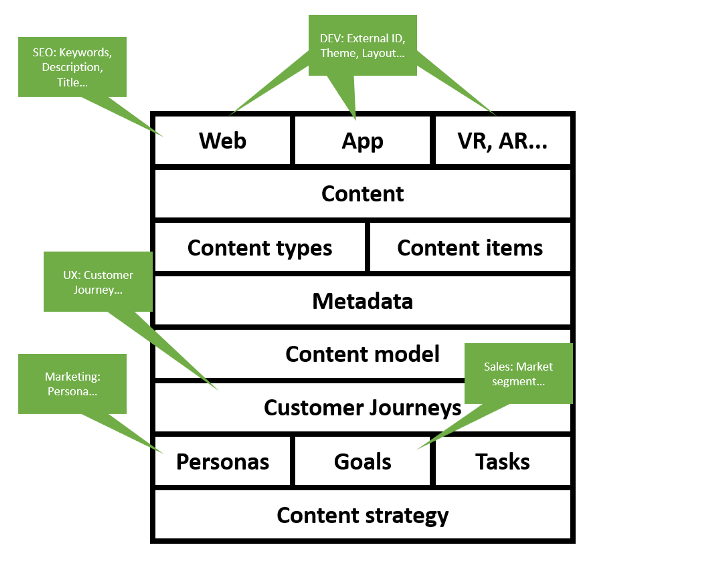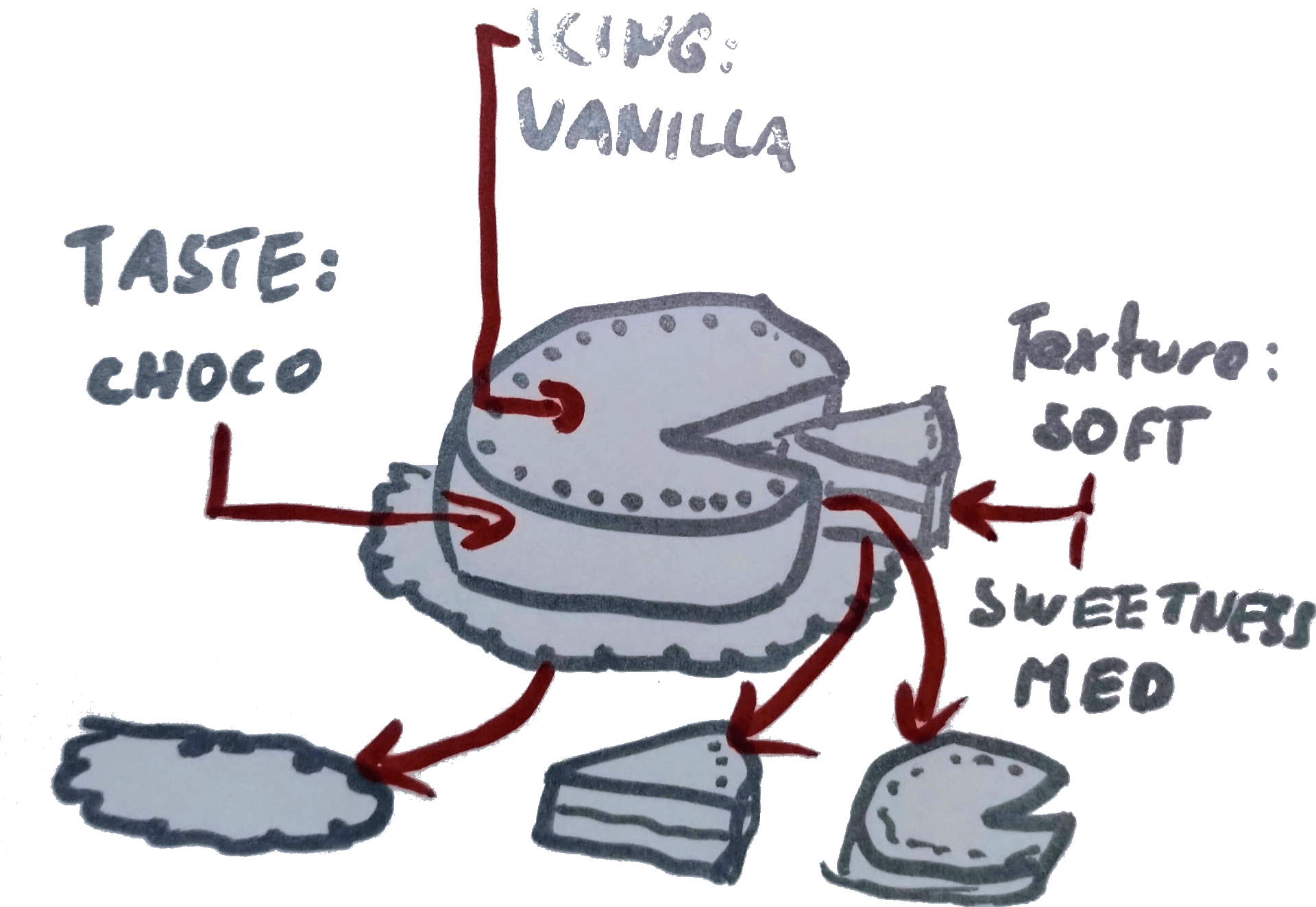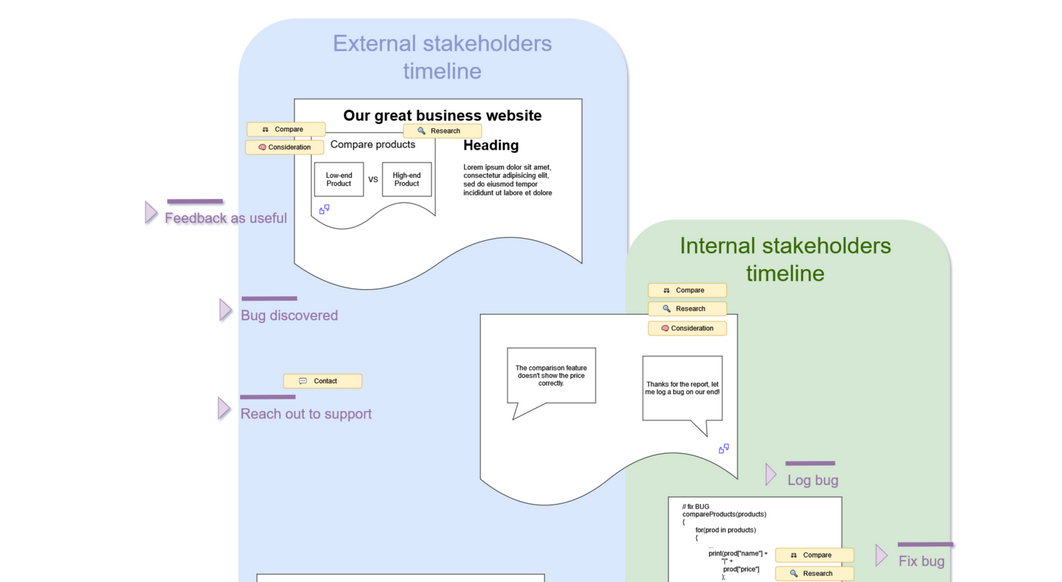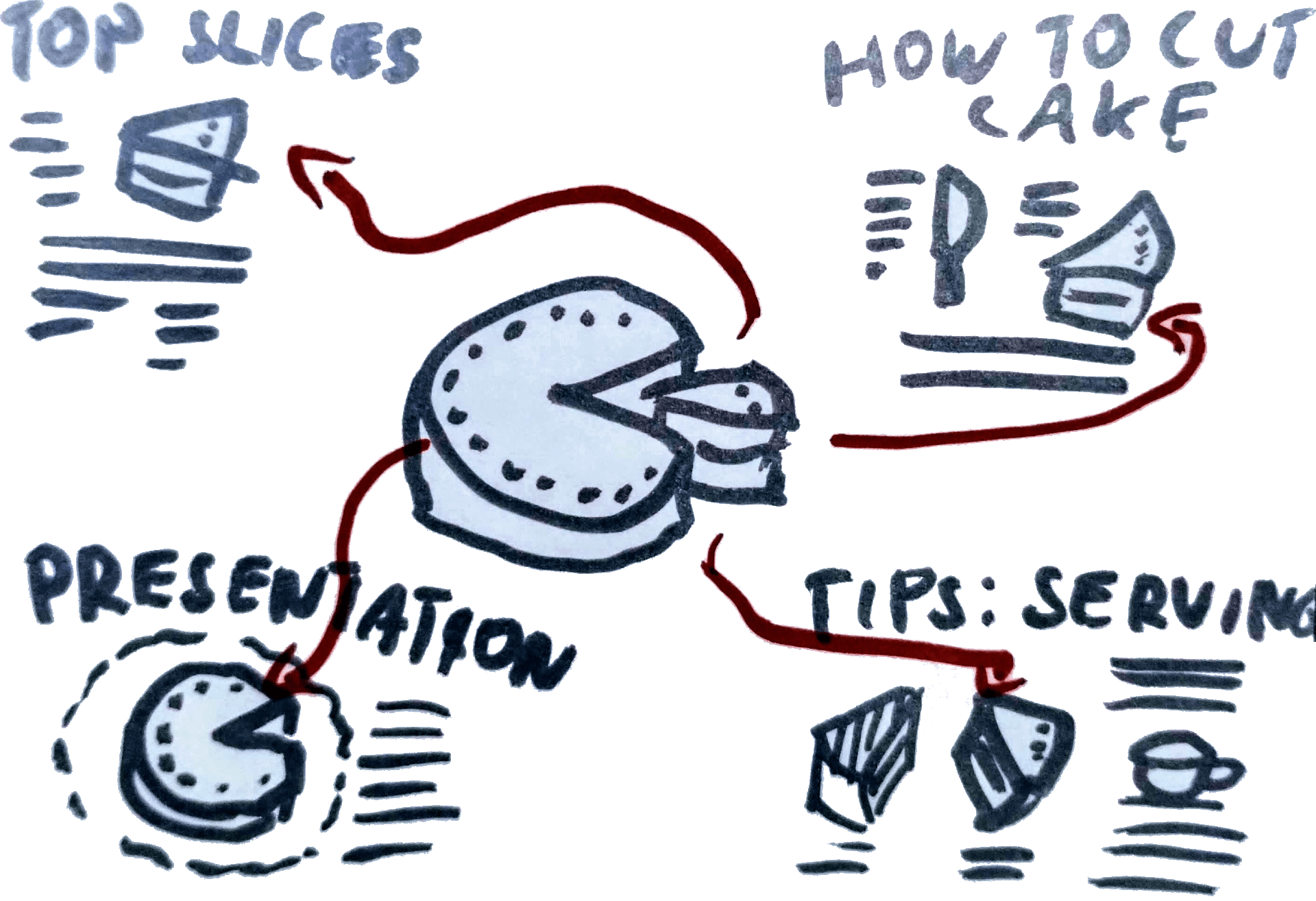
Nothing is worse than remembering this great article you read a year ago and not being able to find it. You might think, it’s only you, but multiply this by the number of employees, customers, days in a year and this might be a serious issue. This becomes a content discoverability issue and even a content creation friction point.
Tagging should add to the discoverability, not to the labor
You want to target the ChocoXmas topic you just came up with, but you can’t seem to find that one testimonial talking about the best, softest, chocolate cake, praising it over your competition. The testimonial doesn’t mention the cake by name so you can’t simply search it. How awesome would it be, if it were tagged with a taxonomy term of the cake the customer is talking about? Or the competitor they are comparing it to?
So yes, it’s not enough to create reusable content, you also need to be able to find it. The only way is to include taxonomies which add context to the content item. Context that otherwise isn’t apparent from the text itself.
Every time you struggle, note it down!
Start collecting instances, where you are struggling to find content. Imagine what taxonomy, term or synonym you’d use to try to find it. Collect this list of taxonomy terms in a spreadsheet across the company. Combine them, categorize them and you’ll slowly get a usable taxonomy for discovering your most valuable content.
Don’t forget about your users. What are they searching for? Check search analytics. Are you able to make the searched for content appear automatically? What an amazing experience that would be for the end user. And you don’t have to stop there. You can make this algorithm also suggest content to your editors.
💡 How to make your reusable content discoverable? In short:
- Difficult to search and discover content causes content friction
- Supporting taxonomies and metadata should add to the content itself, not duplicate it so you expand the terms under which it can be discovered
- Start collecting terms now by noting down instances, when you struggle finding content. Note disown terms, which you used to search for it.
- Group collected terms into logical taxonomy groups




